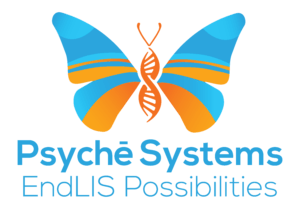Laboratory Information System, or LIS, software plays a crucial role in streamlining a wide range of diagnostic and treatment processes within the medical field. The data this type of software provides can assist pathologists with making accurate gastroenterological diagnoses by providing a wide range of insights into a person’s condition. This article explains how LIS software can help pathologists and other medical professionals diagnose conditions and recommend treatments more effectively.
Streamlining Case Access and Review
Being able to access information quickly is vital to running a well-organized medical facility. LIS software makes it possible for pathologists to open various types of files from any location and on any type of device. Implementing LIS means that medical professionals no longer need to rely on a specific computer or device to find information about a specific patient’s condition or treatment plan. LIS enables medical professionals working in the same facility to share information with each other.
This type of digital workspace also makes integrating a wide range of file types and formats possible to help medical professionals make the most of their limited resources. LIS software combines the benefits of managing information about each patient’s medical history through a wide variety of types of slides, reports, and other data, which allows medical professionals to track nearly any type of data regarding patients’ gastroenterological health and conditions to improve their ability to help them manage these concerns.
These programs also allow multiple users to view files at once, which can generate opportunities for collaboration. This concept is particularly beneficial when it comes to allowing doctors from various practices to share information, work together, and find solutions to help their patients without needing to meet in person. Increased collaboration will grant patients access to the combined experience of all the doctors involved in their care, leading to treatment plans that are more likely to provide the necessary results.
Automating Annotations and Diagnoses
LIS also plays a crucial role in assisting medical professionals with automating various processes, which can streamline the process of making certain types of diagnoses. With this software, medical professionals can capture, study, and analyze different types of microscopic and macroscopic image annotations, making locating and identifying the source or cause of gastroenterological problems easier. They can then use these image annotations to make faster diagnoses because they do not need to spend as much time performing and evaluating the results of as many types of diagnostic tests, which can reduce the amount of time that passes before patients can begin the treatment process.
This software can also auto-populate preliminary diagnoses, closing the gap between the patient’s initial visit and getting them started on the right treatment path. While these initial diagnoses are not infallible and must still be reviewed by a physician before a final diagnosis and treatment recommendation can be made, they will streamline the path toward ultimately reaching a definitive diagnosis.
LIS software also integrates with EHR interfaces to provide physicians with updates about the accuracy of final diagnoses and how well patients respond to treatments.
Informing Quality Initiatives
LIS can de-aggregate various case data types to help tumor boards monitor how well each patient progresses. Because it is not always easy to tell what specific factor is causing the appearance of unexpected data, breaking down large amounts of complex data into more straightforward concepts that are easier to work with can make it easier to draw accurate conclusions that can help doctors make decisions about whether each patient should continue on their current treatment path or try another option that might be a better fit for them.
This software simplifies the process of tracking clinical outcomes over time. Contemporaneous data can help shape future gastroenterological treatments, improving overall success rates. Compiling information about similar cases within your practice can help you better understand what treatment options work well for the highest number of patients.
LIS software can also gather a wide range of analytics about each patient’s condition. Evaluating this data and monitoring how it changes over time can help physicians track how well a patient’s treatment plan works and watch for signs that their condition may be worsening or that a secondary condition may be developing. LIS can be a helpful tool for monitoring TAT, diagnostic concordance, and a wide range of other data types that can provide insights into how each patient’s condition improves or declines over time.
Choose LIS Software for Streamlined Gastroenterological Treatment Monitoring
LIS software helps simplify and improve many of the standard workflows used to diagnose and treat gastroenterological conditions. This results in improved turnaround times, a wide range of metrics that can be used to monitor treatment progress, and increased opportunities for collaboration between medical professionals. Contact us today for a demo and learn how LIS medical software can benefit your gastroenterological practice and, even more importantly, the patients under your care.
Image by gpointstudio on Freepik

